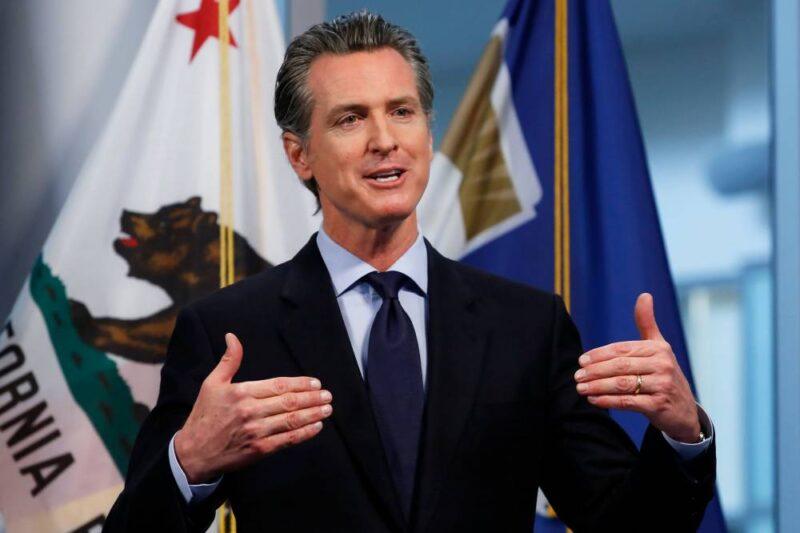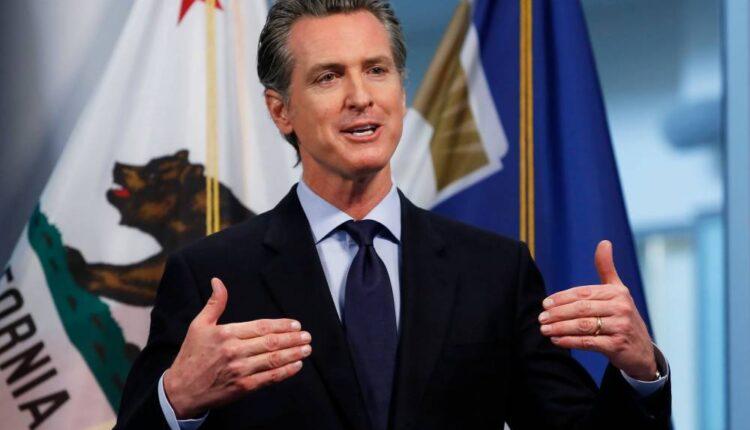
- California Gov. Gavin Newsom announced Tuesday a guide to how California will reopen society and the economy across the state as officials weigh lifting restrictive orders meant to curb the spread of the coronavirus.
- Newsom issued a statewide stay-at-home order on March 19, making it one of the first states to issue mandatory social distancing policies in response to the Covid-19 outbreak.
- Newsom outlined six key indicators that will guide the state's decision as it considers lifting the stay-at-home order.
California Gov. Gavin NewsomRich Pedroncelli | AP
California Gov. Gavin Newsom announced Tuesday a guide to how Californiawill reopen society and the economy across the state as officials weigh lifting restrictive orders meant to curb the spread of the coronavirus.
Newsom became the first governor to issue a statewide stay-at-home order on March 19. He said Tuesday that the order and similar policies have successfully minimized California's Covid-19 outbreak, which has infected more than 22,348 people across the state and killed at least 687 people in California as of Sunday, according to California Health and Human Services.
"While Californians have stepped up in a big way to flatten the curve and buy us time to prepare to fight the virus, at some point in the future we will need to modify our stay-at-home order," Newsom said in a statement. "As we contemplate reopening parts of our state, we must be guided by science and data, and we must understand that things will look different than before."
Local officials will have a "profound and outsize influence" on any any decision to lift public health orders, Newsom said. He went on to outline six key indicators that will guide the state's decision as it considers lifting the stay-at-home order:
- "The ability to monitor and protect our communities through testing, contact tracing, isolating, and supporting those who are positive or exposed;
- The ability to prevent infection in people who are at risk for more severe COVID-19;
- The ability of the hospital and health systems to handle surges;
- The ability to develop therapeutics to meet the demand;
- The ability for businesses, schools, and child care facilities to support physical distancing; and
- The ability to determine when to reinstitute certain measures, such as the stay-at-home orders, if necessary."
Even once the stay-at-home order is lifted, Newsom said society won't snap back to normal. For example, he said restaurants will likely have to limit capacity and face coverings in public will likely be common.
"There's no light switch here. It's more like a dimmer," he said at a news briefing. "Normal, it will not be until we have herd immunity and a vaccine. You may be having dinner with the waiter wearing gloves and maybe a face mask…where your temperature is checked before walking in. These are likely scenarios."
Newsom declined to offer a timeline on when the order might be lifted, but he told reporters that if the six requirements are met by the first week of May, "ask me the question then." However, he cautioned that lifting the order too early could have dire consequences if the virus begins to spread rapidly.
Ultimately, he said, society will have to remain vigilant at least until there is a vaccine for Covid-19, which is unlikely to be discovered and produced before 2021.
California's relatively early and strict response to the outbreak appears to have paid off. While hundreds have died, it's managed to avoid the situation of New York state, which has more confirmed Covid-19 cases than any country outside of the U.S.
However, the stringent measures have come with consequences for the state of nearly 40 million people. California processed about 2.3 million unemployment insurance claims in the four weeks leading up to April 9, Newsom said last week, which is more than the total number of claims filed in 2019.
On Monday, Newsom along with Washington Gov. Jay Inslee and Oregon Gov. Kate Brown announced a regional partnership to coordinate the reopening of the West Coast. In the northeast, seven other states, including New York and New Jersey, the two hardest-hit states by the coronavirus, announced a similar plan to coordinate reopening.
With the exception of Massachusetts, all ten states actively developing plans to reopen are led by Democratic governors.
Announcements about the pacts to coordinate plans came after Republican President Donald Trump declared any decision on reopening the economy was up to him. The White House is preparing its own plans which are expected to be announced later this week.
VIDEO1:3201:32California Governor Newsome outlines state's re-opening planClosing Bell
Source: cnbc.com

